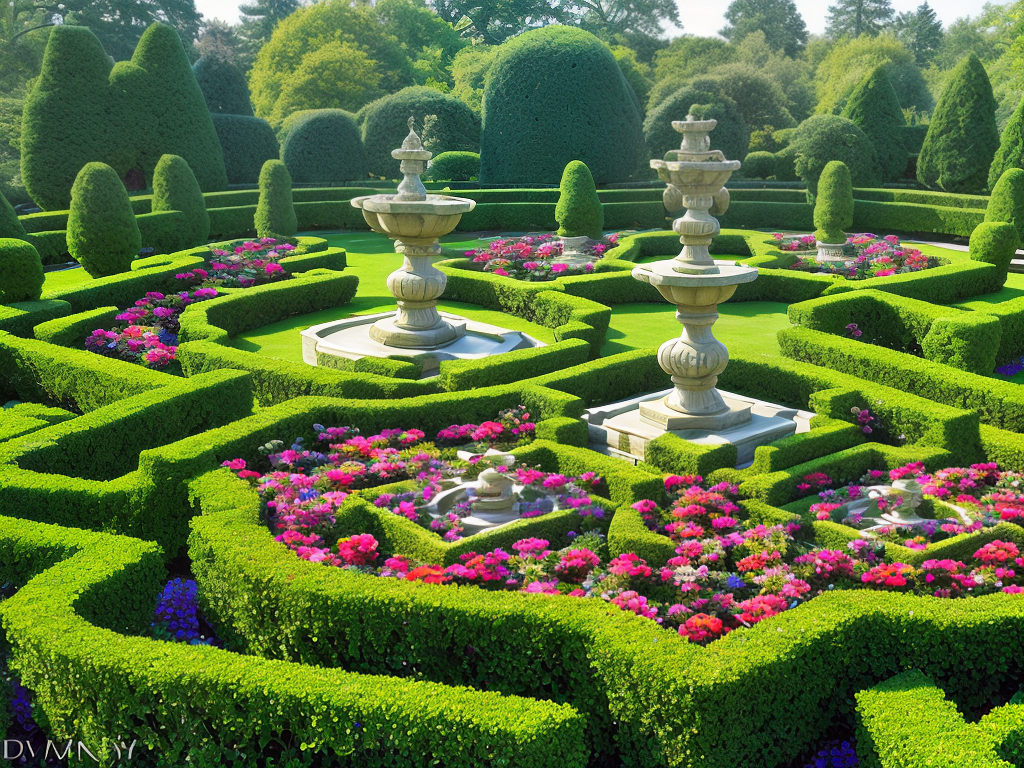
Knot gardens are an excellent way to add texture and interest to the landscaping. Similar to parterre gardens, knot gardens are formal garden designs that bring distinct patterns to life and can mimic designs found in textiles, tapestry, and even woodworking [1]. In this article, we will explore the benefits of knot gardens for landscaping and how they can be used to enhance your outdoor space.
What is a Knot Garden?
Before we delve into the benefits of knot gardens, let’s take a quick look at what they are. A knot garden is a garden or garden area containing an interlocking or intertwining pattern using a clipped Box, Buxus sempervirens, which is designed to be viewed from above [3]. The areas produced can be gravelled or planted. Knot gardens can be created using a variety of plants, including perennials, annuals, or small shrubs. They can be planted in a stylized display of shapes and patterns, creating an eye-catching design.
Benefits of Knot Gardens for Landscaping
Adding Texture and Interest
One of the main benefits of knot gardens for landscaping is their ability to add texture and interest to an outdoor space. Knot gardens are typically created using plants with different textures, such as fine, medium, and coarse-textured plants [7]. This combination of textures creates a dynamic and visually appealing landscape design that can be enjoyed year-round. Knot gardens can also be used to create a sense of depth and dimension in a garden, making it feel larger and more spacious.
Creating a Focal Point
Knot gardens can also be used to create a focal point in a garden. By directing eyes and feet to certain parts of a garden, knot gardens can bring focus to a piece of art, water feature, or specimen plant [4]. This can be especially useful if you have a small garden or outdoor space, as it allows you to draw attention to a specific area without overwhelming the space.
Improving Air Quality
Landscaping has been shown to improve air quality, and knot gardens are no exception. By adding plants to your outdoor space, you can help reduce the amount of carbon dioxide in the air and increase the amount of oxygen [10]. Knot gardens can be especially beneficial in this regard, as they often contain a variety of plants, each with its own unique ability to filter pollutants from the air.
Low Maintenance
Knot gardens are relatively low maintenance, making them a popular choice for those who want to add interest to their landscaping without spending hours tending to their garden. Once established, knot gardens require little water or fertilizer, and they can be pruned once or twice a year to maintain their shape [2].
Creating an Outdoor Room
Knot gardens can also be used to create an outdoor room, providing a defined space for outdoor entertaining or relaxation. By adding seating or dining areas to your knot garden, you can create a comfortable and inviting space for family and friends to gather [9].
Conclusion
Knot gardens are an excellent way to add texture, interest, and beauty to your landscaping. They can be used to create a focal point, improve air quality, and even create an outdoor room for entertaining or relaxation. With their low maintenance requirements and ability to enhance any outdoor space, it’s no wonder knot gardens have become a popular choice for gardeners and landscaping enthusiasts alike.
Whether you’re looking to create a formal garden design or simply add a touch of elegance to your outdoor space, a knot garden is a great way to achieve your landscaping goals. So, why not try creating your own knot garden today and enjoy the many benefits it has to offer?